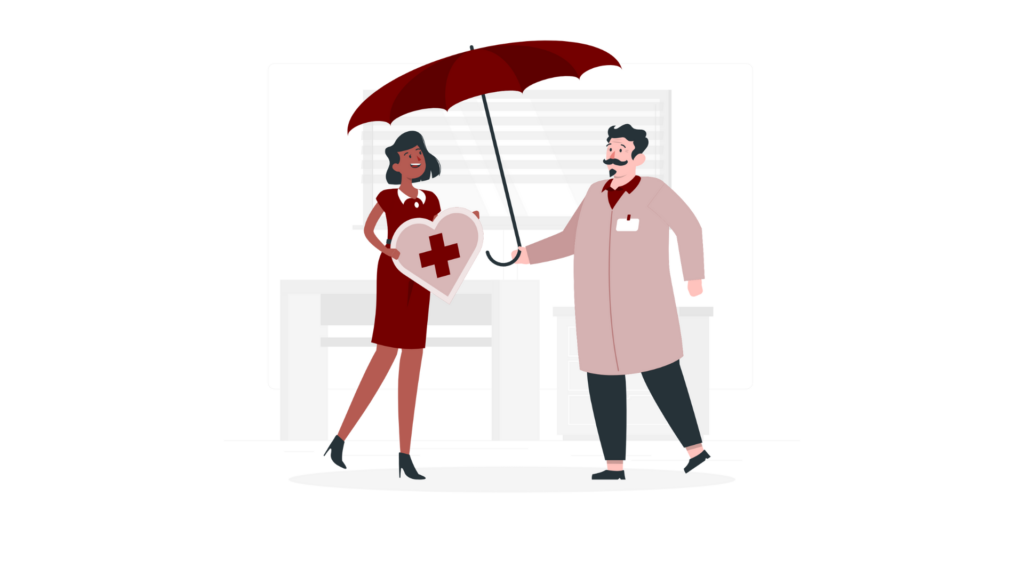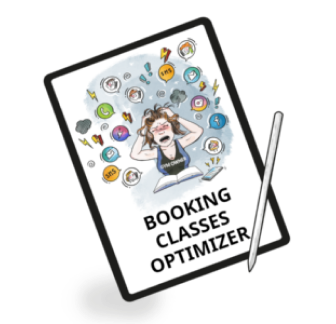Are you the owner or future owner of a gym? Do you want to provide your members with a clean and safe space? You don’t want to risk accidents and your company has to operate strictly in accordance with the law?
We present you a large and complete list of issues that you need to take care of when it comes to gym health and safety. Take the list with you – it is downloadable and printable.
Key takeaways
- Gym health and safety procedures are important because they help prevent injuries and ensure a safe environment for all users.
- You can assure your members safety by: hygienic contactless payments thanks to gym payment software, touchless solutions, like gym POS and gym check in system.
- The main aspects of a gym health and safety list are: equipment inspections, proper maintenance, cleanliness, staff training, clear signage, emergency procedures, adequate lighting, proper ventilation, availability of safety gear, member education, well-stocked first aid supplies.
- In case of an emergency in a gym: stay calm, alert staff immediately, use emergency exits, call emergency services, assist injured persons if safe, and follow instructions from staff and emergency responders.
Is Gym Health and Safety Really So Important?
Yes, gym health and safety are crucial. Ensuring a safe environment prevents injuries, promotes hygiene, and fosters a positive atmosphere.
Proper safety measures protect both staff and members, encouraging consistent and effective workouts. Ignoring these can lead to accidents (with but also without gym equipment), health risks, and legal issues for the gym.

DOWNLOAD: Gym Health and Safety Checklist
Here is a comprehensive gym health and safety checklist. We have prepared it for you and for your fitness facility.
Our list is long and exhaustive, because we talk about all important topics: safety, health, cleanliness, comfort and legislation.
Download it, print it and have it at your disposal in an accessible place, e.g. at the reception desk.

Gym Health and Safety Checklist
The points about gym health and safety are described in detail below. Each of them has a box to check off. Treat the issue as resolved if your gym already has it well organized.
1. Assess Where Dangerous Points or Moments May Be
Conduct a small risk assessment in your premises. Think about every, even seemingly insignificant detail.
☐ Faulty Equipment: Poorly maintained machines or weights.
☐ Improper Use: Incorrect handling of equipment. Teach the members to use the equipment safely.
☐ Overcrowding: Increased risk of accidents and injuries. Count the maximum number of people at one time on the premises.
☐ Lack of Supervision: Insufficient guidance from trainers.
☐ Slippery Floors: Wet or sweaty surfaces causing slips.
☐ Dangerous points: for having a safe gym environment, fix the issues of loose, not glued carpet in the entrance.
☐ Dangerous points: for having a safe gym environment, fix the issues of furniture edges (reception desks, cabinets) protruding and placed at the level of human temples.
☐ Poor Lighting: Insufficient visibility leading to mishaps.
☐ Inadequate Warm-up: Increased risk of muscle strains or injuries.
☐ Improper Storage: Weights and equipment left out can cause tripping hazards.
☐ Doors open: inconveniently or in the wrong direction, leading to impact and pinching in passageways.
☐ Your ideas as gym owner, that come from observations of your interiors: …………………………………..
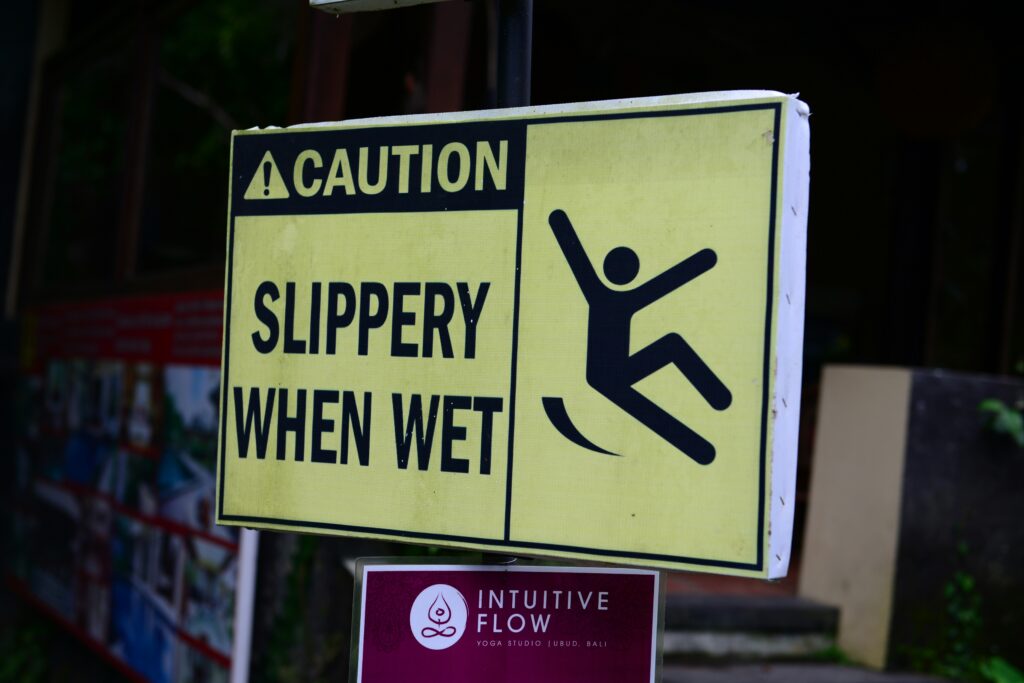
2. Legal Regulations About Gym Health and Safety
The legal framework for fitness places in the United States involves various regulations about protecting consumers, ensuring safety, and maintaining transparent business practices.

By adhering to these regulations and implementing best practices, gyms can create a safe and trustworthy environment for their members while avoiding legal pitfalls.
Here are some important aspects of these regulations:
☐ Consumer Protection
☐ Contract Cancellation and Membership Terms: States like California and New York have laws that allow consumers to cancel their gym memberships within a specified period after signing. For instance, California mandates a clause in membership contracts that permits cancellation within five business days (excluding Sundays and holidays) after signing.
☐ Escrow Accounts: To safeguard consumers, some states require gyms to maintain escrow accounts. These accounts ensure that members can receive refunds if the facility fails to open as promised.
☐ Safety Requirements
☐ Equipment Maintenance and Inspections: Regular inspections and maintenance of gym equipment are essential to prevent accidents and injuries. Fitness facilities must document all maintenance activities of their fitness equipment to demonstrate compliance.
☐ Staff Training and Certifications: Fitness trainers and instructors must be appropriately certified and trained in safety protocols, including first aid and emergency response. This helps ensure a safe environment for gym members.
☐ Emergency Equipment: Legislation like the New York AED bill requires gyms to have automated external defibrillators (AEDs) on-site, with specific guidelines based on the number of members. You need a proper signage showing the AEDs place – the legal regulations define this as “clear and visible signage”. This is aimed at enhancing emergency preparedness in gyms.
☐ Employment and Labor Laws
☐ Wage and Hour Laws: Any fitness center must comply with federal and state labor laws regarding overtime, wage payments, and employee classification. Misclassifying workers as independent contractors can lead to significant legal challenges, including class-action lawsuits.
☐ Licensing and Registration: In certain areas, personal fitness trainers must be licensed or registered. For example, the District of Columbia (declared the fittest city in America) requires personal fitness trainers to register to provide services, and other states are considering similar regulations.

3 Data Protection and Privacy
☐ Biometric Data: States like California have proposed legislation to regulate the collection and use of biometric data by businesses, including gyms. These laws require businesses to obtain written consent from customers and establish policies for data retention and destruction.
4 Industry Standards and Best Practices
☐ Codes of Practice: Industry organizations have developed codes of practice to promote ethical and professional standards within the fitness industry. These codes cover aspects such as business operations, consumer agreements, and termination policies. Adhering to these voluntary codes can help ensure compliance with legal requirements and enhance consumer trust.
5 Sanitation and Contactless Check-ins
Infection Rates in Gyms: During the COVID-19 pandemic, the infection rate in U.S. gyms was extremely low, at 0.002% out of 49.4 million check-ins across 2,877 locations, highlighting the effectiveness of safety protocols (www.smallbizgenius.net).
Gym management software is a very helpful tool in maintaining hygiene in the gym. Thanks to it, you can perform, among others:
- hygienic contactless payments thanks to gym payment software.
- touchless booking and merchandise thanks to gym POS
- touchless gym entrance and leaving thanks to gym check in system.
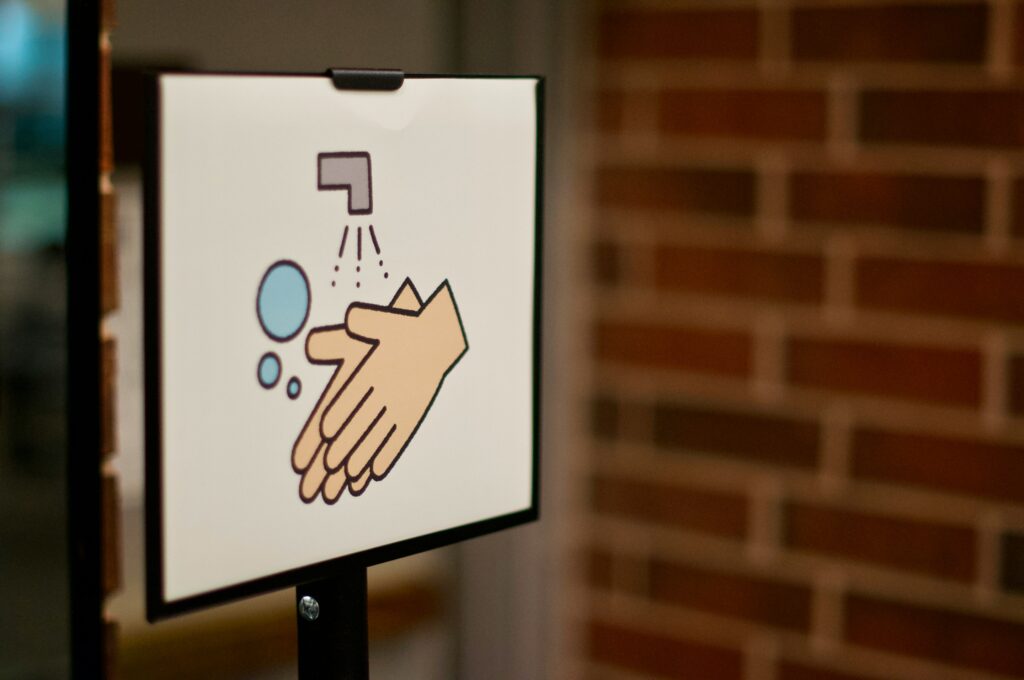

Manage your gym
like a pro
Get more online bookings and increase your gym profit
6 Gym Layout and Design
Good design and arrangement of rooms is very important for gym safety. For example, locker rooms that are too small and corridors that are too narrow may turn out to be very dangerous in an emergency situation.
Check out our other article about gym survey questions. In the survey, your customers can say what they like about the interior or what they would like to change.
7 Staff Skills
When we talk about staff skills, it is not only about certificates, diplomas and years of experience in a given sport. A good trainer also has interpersonal skills and an educational mission.
Is assertive enough to maintain the discipline of classes necessary to maintain the safety of participants. He can firmly refuse to accept the dangerous behavior of his clients. As a gym owner, conduct staff training also in the area of soft skills.
8 Emergency Preparedness
☐ First Aid Kits
It is very important to have well-stocked first aid kits easily accessible throughout the gym. These kits should include basic medical supplies like bandages, antiseptic solutions, and adhesive tapes, but also spray ice for small impacts.
Regularly checking and replenishing these supplies ensures they are always up-to-date and available for emergencies.
☐ CPR Training
Along with first aid kits, ensuring that staff and key employees are trained in CPR can be life-saving. Periodically arranging CPR certification courses helps staff members refresh their skills and stay current with the latest techniques.
This preparedness enables the gym to respond quickly and effectively in critical medical situations.
9 Not Underrated Warm-up & Cool-down
Remind your trainers to talk a lot about injury prevention. It’s not just about a good warm-up. Members must know that they need to strictly follow the instructor’s instructions and properly hydrate their body during training.
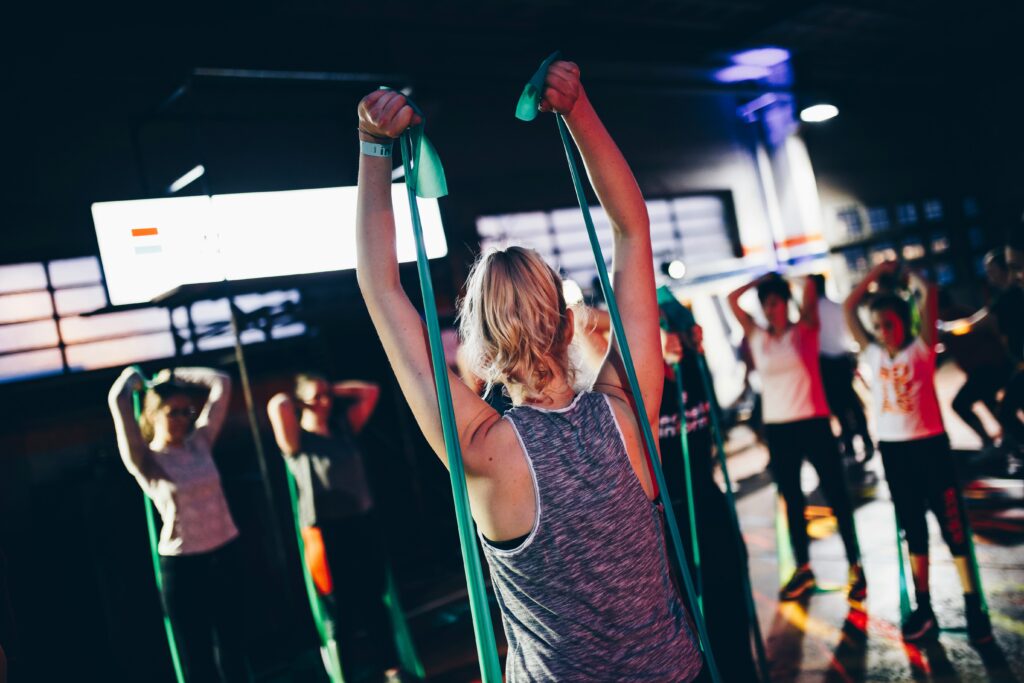
10 Safe Gym Equipment Storage
Make sure to store gym equipment properly. Install shelves and frames so inclined and at the appropriate height.
On the one hand, the idea is to prevent anything from falling on anyone’s head, and on the other, to make it easy to remove kettlebells and other items.
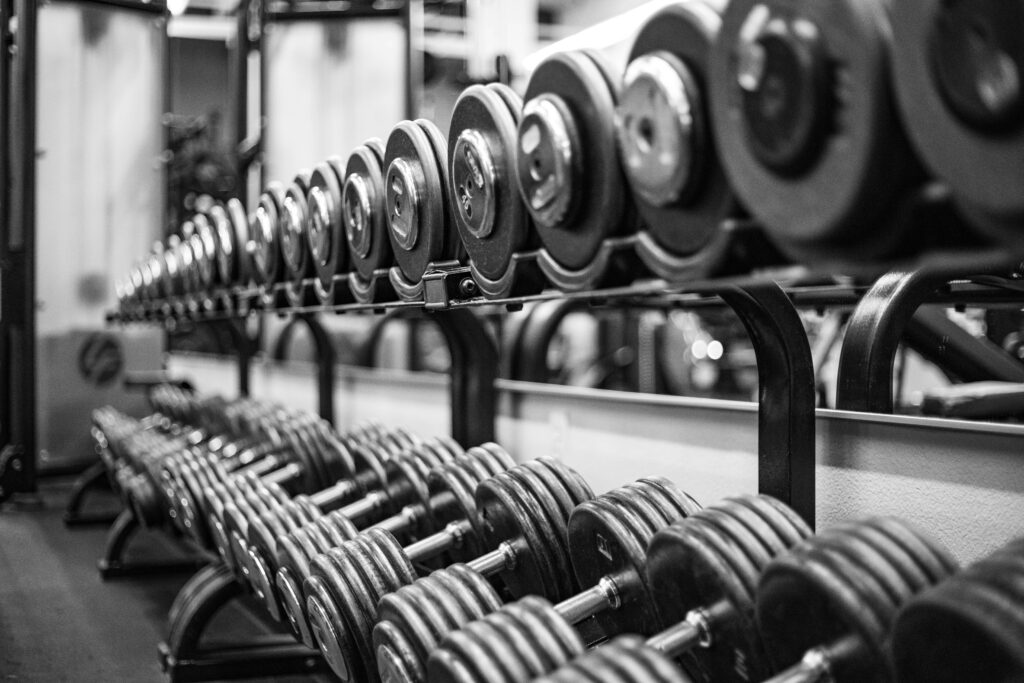
11 Different Kinds of Gyms - Different Equipment Maintenance
It’s clear that different fitness facilities will have different types of equipment. Each of them requires different maintenance and storage.
In the case of martial arts schools, issues of security of access to weapons will be more important. Treadmills and exercise bikes should be checked for worn belts, worn bearings, etc.
Look, how different the equipment was in 1970ties 🙂
Fitness equipment in 1970ties
12 Indoor Air Quality
Indoor air quality (IAQ) is vital for a healthy environment in fitness centers. Poor IAQ can cause respiratory issues, allergies, and headaches. Improving IAQ can be achieved through fans, HVAC replacement filters, portable air filters, and air quality monitoring systems.
Fans enhance ventilation, HVAC filters capture airborne particles, and portable air filters target specific areas.
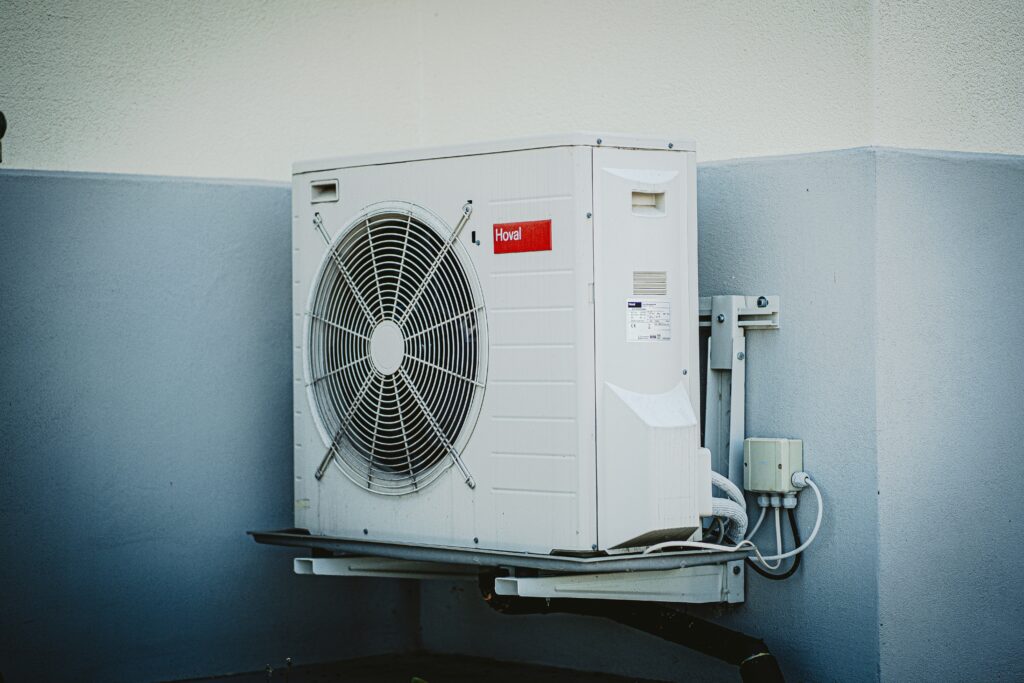
Monitoring systems track temperature, humidity, carbon dioxide, and particulate matter, enabling quick corrective action. Prioritizing IAQ helps reduce pollutants, improve ventilation, and ensure the well-being of fitness center patrons.
13 In Case of Emergency
☐ How to proceed in case of emergency? Introduce your customers and employees to the following list of steps. You can print it and place it in a visible place in your gym.
- Stay Calm: Keep a clear head and avoid panic.
- Alert Staff: Notify gym personnel immediately.
- Use Emergency Exits: Familiarize yourself with exit locations and use them if necessary.
- First Aid Kits: Know the location of first aid kits and use them if trained.
- Call Emergency Services: Dial emergency numbers (e.g., 911) for medical or fire emergencies.
- Assist Injured Persons: Provide assistance if safe to do so.
- Follow Instructions: Listen to and follow any directions given by staff or emergency responders.
- Evacuate Safely: Move quickly but carefully to designated safe areas.
- Report Hazards: Inform staff about any observed hazards or dangerous situations.
- Stay Informed: Pay attention to announcements and updates from gym staff or emergency services.
FAQ
A common hazard in a gym is slipping or tripping on wet floors or equipment. There are also injuries related to insufficient warm-up or improper use of fitness equipment.
Ensuring safety in the gym as the gym owner consists of: regular inspections, maintenance schedule, clean environment, staff training, clear signage, emergency plans, adequate lighting, proper ventilation, safety gear, member education, first aid supplies, monitor gym’s capacity.
- Clean equipment after use to prevent germs and maintain hygiene.
- Return weights to their proper place to avoid tripping hazards.
- Allow others to use equipment between sets.
- Bring a towel to wipe sweat and maintain cleanliness.
- Give others enough space to exercise safely.
- Avoid distractions and be mindful of others waiting for equipment.
- Inform staff of any broken equipment or hazards.
- Wear appropriate workout clothing and footwear.

